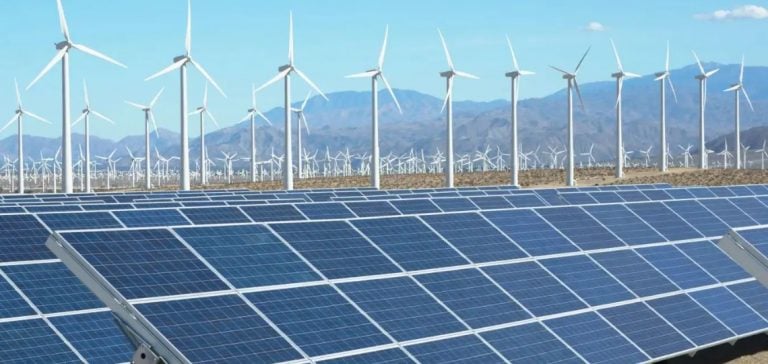The Wood Mackenzie report, published in October 2024, highlights the accelerating competitiveness of renewable energy worldwide. The report reveals that the Levelized Cost of Electricity (LCOE) for photovoltaic solar and onshore wind continues to decrease, while offshore wind remains more expensive.
The average cost of fixed-axis photovoltaic solar is estimated at $66/MWh globally, with significant regional and technological variations. Single-axis tracking solar, used in large-scale projects, shows a slightly lower LCOE at $60/MWh. This cost reduction is partly due to advancements in production technologies and intense competition in regional markets.
Significant cost reductions for onshore wind
Onshore wind, meanwhile, shows an average cost of $75/MWh globally, with fluctuations ranging from $23 to $139/MWh. This wide range reflects the diversity of terrains and markets where the technology is deployed. In contrast, offshore wind, particularly floating systems, remains more expensive. Fixed offshore installations average $230/MWh, while floating systems reach $320/MWh. Despite these high costs, experts expect a progressive decrease over time, with a significant cost drop anticipated by 2060.
Regional insights: Asia-Pacific leads
In the Asia-Pacific region, Wood Mackenzie reports a 16% drop in LCOE for renewable technologies in 2024, driven primarily by a 21% reduction in capital costs. China remains the undisputed leader in offshore wind, while photovoltaic solar remains the most competitive option. Recent technological advancements, such as TOPCon and HJT modules, have significantly reduced the costs of distributed solar, which saw a 33% decrease.
Europe and North America closely follow
In Europe, the LCOE for renewable energy registered a modest 0.2% decline, despite a 9% reduction in installation costs between 2020 and 2023. Large-scale solar in southern Europe is particularly competitive. In the United States, solar and wind energy saw their LCOE decrease by 4.6% in 2024, mainly due to lower material costs and increased production capacity of critical components. Projections suggest that by 2060, large-scale solar could see its LCOE drop by 60%, while onshore wind could experience a 42% reduction.
The Middle East and Africa: Promising perspectives
The Middle East and Africa, regions where photovoltaic solar benefits from high solar irradiance, continue to see significant cost reductions. With a 13% reduction in costs per kW, single-axis tracker solar emerges as the most attractive option for developers. Solar costs could drop to $19.7/MWh by 2060, placing the region at the forefront of the energy transition.
According to Amhed Jameel Abdullah, senior research analyst at Wood Mackenzie, these continuous cost reductions in renewable energy will profoundly reshape global energy markets. Investments in renewable technologies, combined with innovations in storage and distribution, are expected to ensure a future energy supply that is not only sustainable but also efficient and accessible to more countries.






















